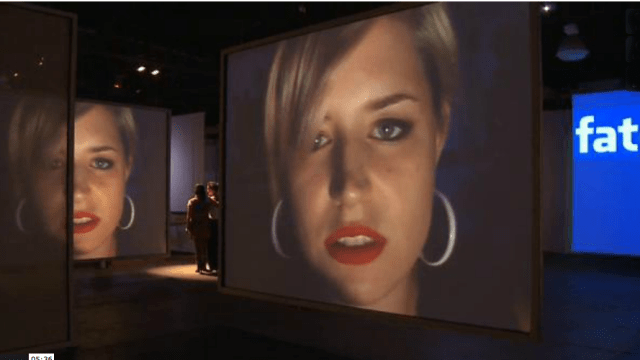The Evolution of Aesthetics: The Origins Of Music And Visual Art

One of the great mysteries of art is why it exists. Although our desire to create and enjoy art is so widespread that it appears as natural as eating or reproducing -– nearly every culture draws, dances, sings, recites poetry and tells stories -– the origins of human aesthetics are not clear-cut. What’s peculiar is that from a biological point of view art appears to serve no adaptive advantages whatsoever. Why, for instance, would our prehistoric ancestors spend time painting or decorating instead of hunting and gathering? And it seems unlikely that poetry ever helped anyone eat or reproduce. Our brain demands about 20 percent of our metabolic energy and 40 percent of our blood glucose even though it makes up only 2 percent of our body weight. It’s a costly organ, so why waste it on peripheral interests like art?
Of all the arts music might receive the most attention from evolutionary psychologists. The dominant theory is that music is about sexual selection. Naturally, Darwin was the first to riff on this idea in The Descent of Man. He put it this way:
The impassioned orator, bard, or musician, when with his varied tones and cadences he excites the strongest emotions in his hearers, little suspects that he uses the same means by which his half-human ancestors long ago aroused each other’s ardent passions, during their courtship and rivalry.
Later on in the 20th century evolutionary psychologists including Geoffry Miller and Daniel Levitin endorsed (partially) and expanded this line of reasoning: music, they say, is about getting the girls. But other psychologists including Gary Marcus question this idea by pointing out several problems including the fact that females are just as capable musicians as men. In addition, says Marcus, an investment in music for the sake of propagating one’s genes seems like a horrible bet considering the disproportionate ratio between failed and successful musicians. Besides Hendrix, Jagger and a few others, musicians rarely garner enough success or recognition for their songs to give them a significant sexual advantage. Most importantly, as Marcus points out, musicians usually pursue music because they are passionate about it, not because they want to impress.
And that’s what’s puzzling about music: it’s ability to put us in a wondrous state of flow. What’s more is that music gives the musician and the listener meaning, purpose and comfort. As Nietzsche said, life without it is a mistake. It should seem strange, then, that we humans get so much from something that is so biologically frivolous. Whereas the deliciousness of cheesecake is obvious in the context of the African savannah where fat and sugar were hard to come by, the benefits of music are difficult to trace on evolutionary terms.
One way around this mystery is to say that music is not the direct product of evolution in the first place. Instead, it could be a byproduct of several other cognitive capacities including language and emotion. Good music, therefore, does a particularly good job of hitting certain pleasure points – it’s a type of “auditory cheesecake” in other words. This point of view was put forth by Steven Pinker in his book How The Mind Works. As Pinker says, music is, “an exquisite confection crafted to tickle the sensitive spots of at least six of our mental faculties.”
The origins of visual artwork might be clearer. For instance, across all cultures humans prefer environments where they have an advantage in height, there is an open-savannah terrain and a nearby body of water – such a landscape was ideal for our ancestors who lived on the African Savannah. So it hardly seems like a coincidence that we show a strong preference for paintings that depict wide-open landscapes that include flowers, fertile land and a body of water from a high vantage point. (This also helps explain why high-rises that over look Manhattan’s Central Park are so expensive.)
In The Social Conquest, E. O. Wilson posits that what we know from cognitive science about how brains perceive abstract design also helps us understand visual art on evolutionary terms. According to Wilson:
Neurobiological monitoring, in particular measurements of the damping of alpha waves during perceptions of abstract designs, have shown that the brain is most aroused by patterns in which there is about a 20 percent redundancy of elements or, put roughly, the amount of complexity found in a simple maze, or two turns of a logarithmic spiral, or an asymmetric cross. It may be coincidence (although I think not) that about the same degree of complexity is shared by a great deal of the art in friezes, grillwork, colophons, logographs, and flag designs.
Wilson also speculates that, “a quality of great art is its ability to guide attention from one of its parts to another in a manner that pleasures, informs, and provokes.”
The overarching point is that we don’t compose music for bats or dolphins and we don’t paint paintings for the naturally blind star-nose mole. Rather, our aesthetic output and preferences are bound by our biologies. The arts are actually quite limited in this context. Our sense of smell and taste are vastly inferior to most of the animal kingdom, and we only see a thin slice of the electromagnetic spectrum. As boundless as the arts appear, we can only perceive and express a narrow slice of reality; our audiovisual orientation of the world will always be confining.
Yet, artists insist on challenging expectations and breaking norms. Stravinsky did it with The Rite of Spring, Picasso did it with cubism, and Joyce did it with Finnegans Wake.What characterizes these artists is their craving for novelty – they wanted to keep their audience in a state of flow. And this craving – the desire to transcend form – might be the bigger mystery. How do you explain a Jackson Pollock or Andy Warhol on evolutionary terms?
It’s strange that art exists; perhaps stranger is that we are constantly exploring new ways to express this unexpected cognitive byproduct.





